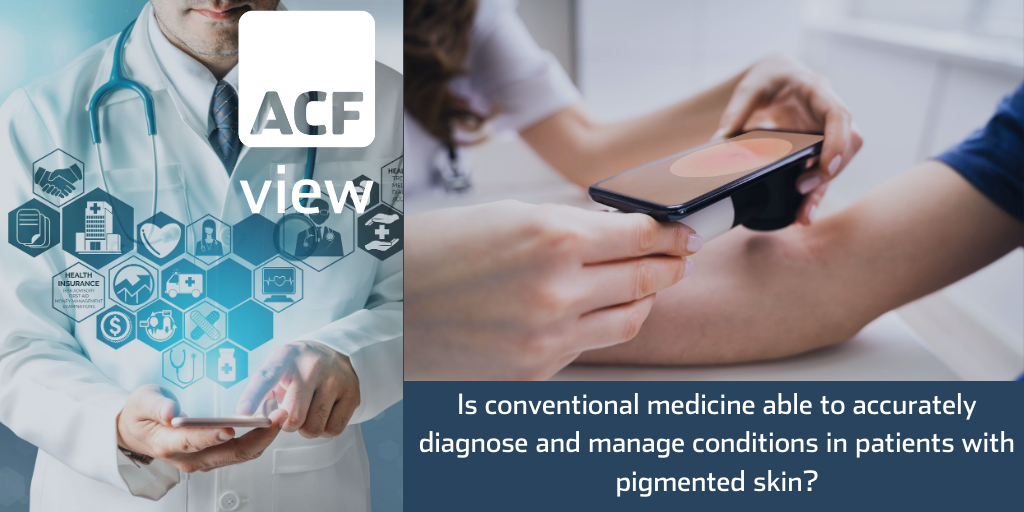Doctors may be missing illnesses because UK medical textbooks often focus on white people
Malone Mukwende, a medical student from St. George’s, University of London noticed during his studies that there was a problem with Ethnic Dermatology. Mr Mukwende’s observation leads us to wider questions over healthcare investment opportunities, telemedicine, remote patient monitoring, sustainability and ESG and personalised care.
Ethnic Dermatology is the diagnosis and management of skin disorders in people with pigmented skin.
Malone observed that the symptoms for conditions explained in textbooks and online resources only spoke to symptoms experienced by people with Caucasian skin. For example, “becoming pale” or “lips turning blue” are not reflected in individuals with more heavily pigmented skin tones.
There is a growing concern that doctors are not catching illnesses in time or patients are being misdiagnosed because conventional medicine is unable to identify symptoms. This means that actual examples of certain conditions do not exist, are hard to find, or medical professionals have never seen the symptoms before.
As a result of his observations, Malone helped create ‘Mind The Gap’ which is a clinical handbook for individuals with pigmented skin. It provides examples of symptoms that occur in people of colour. The Royal London Hospital has also created a project to address these issues in paediatric patients, called ‘Skin Deep’.
The need for smaller and mid-size companies to get better ‘service’ from capital markets is only highlighted by clinical handbooks such as Mind The Gap, campaigns such as Black Lives Matter (BLM) and global forces such as the Covid-19 (C-19) pandemic. Sectors and individual businesses should have self-interest in a drive towards equal opportunity (and personalised care) for all – even if that is only to have access to the best pool of talent they can find for as long as possible.
The healthcare industry can find opportunities in what economists might describe as a market failure and others would rightly describe as inequal opportunity. The opportunity is the delivery of affordable personalised care for everyone.
Telemedicine and remote patient monitoring are two areas that show promise in terms of delivering a universal high-quality care service. Providing a level playing field for everyone also speaks to a very significant investor trend – ESG.
Investors and fund managers have already made it clear that having an ESG policy will no longer be an option, but a requirement. BLM and perhaps C-19 too, make the ‘S’ (Social) in ESG particularly pertinent. Mr. Mukwende’s work suggests there are plenty of value generating projects to uncover via an ESG culture.
Having an ESG policy as part of a company’s core business activities could be an opportunity for small and mid-cap companies to gain the financing via equity and debt investors that they need for R&D in niche areas.
We forecast that by year-end 2020 there will be USD 25.2trn in funds available from investors that use formally announced ESG filter investment candidates, up from $17.5trn in 2018.
Furthermore, there has been an increase in retail vs. institutional investors in the ESG market and we forecast the share of retail investment funds to reach 33% of total ESG funds in 20E, up from 25% in 18A.
Finally, we assess that many funds are using ESG informally, which means ESG investment filtering is something of an iceberg, and the formally announced funds are but the tip above the water.
The chart below depicts the actual amount of ESG funding for 2012 – 2018 and ACF’s forecast for 2019E and 2020E. The chart reflects our view that the growth will be at the higher end based on our ESG growth forecast of 6-10%.

Source: ACF Research Estimates, Global Sustainability Investment Review 2014 & 2018.
















